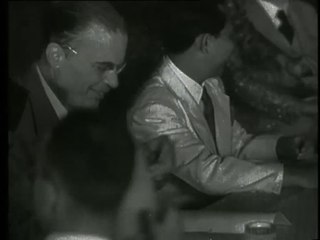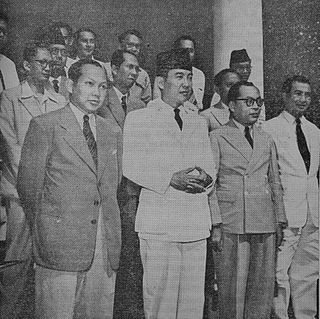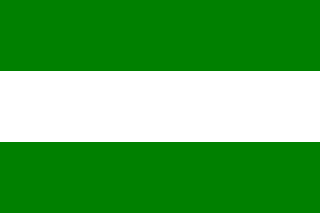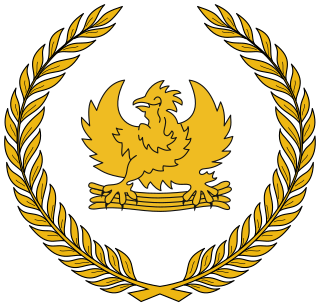
The Indonesian National Revolution, or the Indonesian War of Independence, was an armed conflict and diplomatic struggle between the Republic of Indonesia and the Dutch Empire and an internal social revolution during postwar and postcolonial Indonesia. It took place between Indonesia's declaration of independence in 1945 and the Netherlands' transfer of sovereignty over the Dutch East Indies to the Republic of the United States of Indonesia at the end of 1949.

Hubertus Johannes "Huib" van Mook was a Dutch administrator in the East Indies. During the Indonesian National Revolution, he served as the Acting Governor-General of the Dutch East Indies from 1942 to 1948. Van Mook also had a son named Cornelius van Mook who studied marine engineering at the Massachusetts Institute of Technology. He also wrote about Java - and his work on Kota Gede is a good example of a colonial bureaucrat capable of examining and writing about local folklore.

The Linggardjati Agreement was a political accord concluded on 15 November 1946 by the Dutch administration and the unilaterally declared Republic of Indonesia in the village of Linggarjati, Kuningan Regency, near Cirebon in which the Dutch recognised the republic as exercising de facto authority in Java, Madura and Sumatra.

The Renville Agreement was a United Nations Security Council-brokered political accord between the Netherlands, which was seeking to re-establish its colony in South East Asia, and Indonesian Republicans seeking for Indonesian independence during the Indonesian National Revolution. Ratified on 17 January 1948, the agreement was an unsuccessful attempt to resolve the disputes that arose following the 1946 Linggadjati Agreement. It recognised a cease-fire along the Status Quo Line or so-called "Van Mook Line", an artificial line which connected the most advanced Dutch positions.
The 1949 Federal Constitution of the United States of Indonesia replaced the 1945 Constitution of Indonesia when sovereignty was officially transferred from the Netherlands to Indonesia following the Dutch-Indonesian Round Table Conference. It came into force on 27 December 1949 and was replaced by the Provisional Constitution of 1950 on 17 August 1950.

The Roem–Van Roijen Agreement was an agreement made between Indonesian republicans and the Netherlands on 7 May 1949 at the Des Indes Hotel. The name was derived between the two principal negotiators at the meeting; Mohammad Roem and Jan Herman van Roijen. The purpose of the meeting was to iron out outstanding issues prior to Indonesian independence which was to be granted at the Round Table Conference at The Hague later that same year.

Operation Kraai was a Dutch military offensive against the de facto Republic of Indonesia in December 1948 after negotiations failed. With the advantage of surprise the Dutch managed to capture the Indonesian Republic's temporary capital, Yogyakarta, and seized Indonesian leaders such as de facto Republican President Sukarno. This apparent military success was however followed by guerrilla warfare, while the violation of the Renville Agreement ceasefire diplomatically isolated the Dutch, leading to the Dutch–Indonesian Round Table Conference and recognition of the United States of Indonesia.

The Dutch–Indonesian Round Table Conference was held in The Hague from 23 August to 2 November 1949, between representatives of the Kingdom of the Netherlands, the Republic of Indonesia and the Federal Consultative Assembly, representing various states the Dutch had created in the Indonesian archipelago.

The State of East Indonesia was a post–World War II state formed in the eastern half of Dutch East Indies. Established in December 1946, it became part of the United States of Indonesia (USI) in 1949 at the end of the Indonesian National Revolution, and was dissolved in 1950 with the end of the USI. It comprised all the islands to the east of Borneo and of Java.

Operation Product was a Dutch military offensive against areas of Java and Sumatra controlled by the Republic of Indonesia during the Indonesian National Revolution. It took place between 21 July and 4 August 1947. Referred to by the Dutch as the first politionele actie, in Indonesia, the military offensive is more commonly known in Indonesian history books and military records as Agresi Militer Belanda I.

The Malino Conference was organised by the Dutch in the Sulawesi town of Malino from 16 to 25 July 1946 as part of their attempt to arrange a federal solution for Indonesia. From the end of World War II, Indonesian Republicans had been trying to secure Indonesian Independence from the Dutch colonial control.

The Republic of the United States of Indonesia Cabinet was established as a result of the formation of the United States of Indonesia following the transfer of sovereignty from the Dutch colonial power. It lasted less than a year before Indonesia became a unitary state.

The State of Pasundan was a federal state (negara bagian) formed in the western part of the Indonesian island of Java by the Netherlands in 1948 following the Linggadjati Agreement. It was similar to the geographical area now encompassed by the current provinces of West Java, Banten and Jakarta.

The United States of Indonesia was a short-lived federal state to which the Netherlands formally transferred sovereignty of the Dutch East Indies on 27 December 1949 following the Dutch–Indonesian Round Table Conference. This transfer ended the four-year conflict between Indonesian nationalists and the Netherlands for control of Indonesia. It lasted less than a year, before being replaced by the unitary Republic of Indonesia.

The Denpasar Conference was held from 7–24 December 1946 at the Hotel Bali, Denpasar and resulted in the establishment of the State of East Indonesia, part of the United States of Indonesia.
The Cabinet of the State of East Indonesia served as the central government apparatus of the State of East Indonesia, headed by a prime minister who were appointed by the head of state. During the three-year lifetime of the state between 24 December 1946 and 27 December 1949, there were eight cabinets in total, headed by six different prime ministers.

The Provisional Senate of East Indonesia was the upper house of the parliament of State of East Indonesia, a component of the United States of Indonesia. The Senate existed from May 1949 to August 1950, when the State of East Indonesia was dissolved into the unitary Republic of Indonesia.

The Flags of the United States of Indonesia refers to the state flags that were used as the official state symbols of the United States of Indonesia, the predecessor state of the Republic of Indonesia. The flag that were hoisted during the proclamation of independence on 17 August 1945 remained as the official flag of the United States of Indonesia after its transfer of sovereignty on December 27, 1949 and it was written on the Federal Constitution of 1949.

The Provisional Representative Body of East Indonesia was the lower house of the legislature of the State of East Indonesia, a constituent of the United States of Indonesia. It was formed at the Denpasar Conference in 1946, and dissolved in 1950.


















